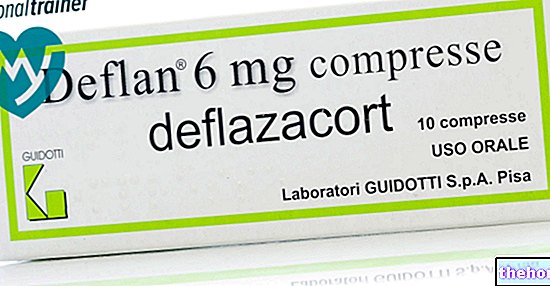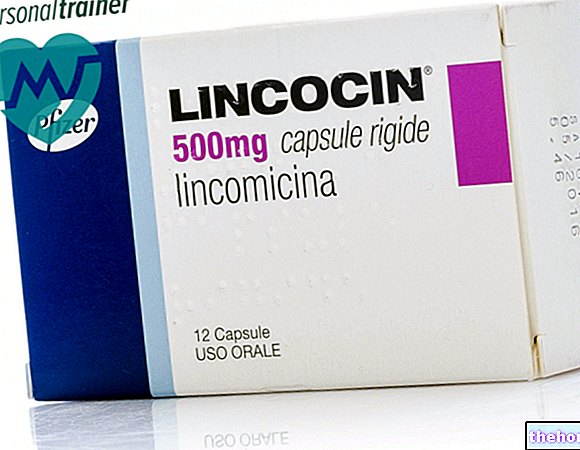Active ingredients: Levocarnitine (L-Propionyl Carnitine HCl)
Dromos 500mg Film-coated tablets
Dromos 300mg Bottles
Why is Dromos used? What is it for?
Category
Active substances on cardiac metabolism.
Therapeutic indications
Obliterating arteriopathies of the lower limbs. Chronic congestive heart failure therapy to increase tolerance to physical exertion.
Contraindications When Dromos should not be used
Hypersensitivity to any component of the drug.
Precautions for use What you need to know before taking Dromos
Although no harmful effects on the fetus have ever been observed in animal studies, during pregnancy and lactation it is advisable to administer the drug in cases of real need, under direct medical supervision.
When used intravenously, the product should be administered slowly (3 minutes).
Interactions Which drugs or foods can modify the effect of Dromos
No incompatibilities have been observed when administering L-propionyl carnitine with digitalis, vasodilators, diuretics, oral antidiabetics.
Warnings It is important to know that:
Keep out of reach of children.
L-propionyl carnitine does not affect the ability to drive or the use of machines.
Dose, Method and Time of Administration How to use Dromos: Posology
Unless otherwise prescribed, the recommended dosage is two 500 mg tablets, two times a day.
In cases of chronic peripheral arterial disease with pain at rest, skin dystrophies or trophic lesions and also in cases of refractory congestive heart failure, intravenous treatment is recommended for 7-20 days (300-600 mg / day), depending on the judgment. of the doctor.
Maintenance therapy can subsequently be performed orally at the previously indicated doses.
Since L-propionyl carnitine is eliminated by the kidney, in patients with moderate or severe renal insufficiency, it is recommended to reduce the dose, according to the physician's judgment.
Preparation of the solution for parenteral use
The solution product should normally be used immediately after reconstitution with its solvent. The reconstituted product can be administered during infusion therapy with glucose or physiological solutions.
The solvent has a pH value of approximately 10 and should only be used for the reconstitution of Dromos.
Overdose What to do if you have taken too much Dromos
There are no known phenomena of L-propionyl carnitine overdose.
Side Effects What are the side effects of Dromos
Sporadic cases of nausea, headache and gastralgia have been reported during repeated oral administration; Cases of injection site tenderness, phlebitis, somnolence, headache, nausea and vomiting have been reported following intravenous administration.
In case of undesirable effects not described in the package leaflet, consult your doctor.
Expiry and Retention
Warning: do not use the drug after the expiry date indicated on the packaging.
Composition
film-coated tablets
One film-coated tablet contains:
Active ingredient: L-propionyl carnitine HCl 500 mg
Excipients: microcrystalline cellulose, povidone, crospovidone, magnesium stearate, anhydrous colloidal silica, hypromellose, macrogol 6000, titanium dioxide, talc.
bottles
One lyophilized bottle contains:
Active ingredient: L-propionyl carnitine HCl 300 mg
Excipients: mannitol
One solvent vial contains: dibasic sodium phosphate dihydrate, tromethamine, water p.p.i.
Pharmaceutical form
- film-coated tablets: 30 tablets of 500 mg
- vials for injections i.v .: 5 bottles of 300 mg + 5 solvent ampoules 10 bottles of 300 mg + 10 solvent ampoules
Source Package Leaflet: AIFA (Italian Medicines Agency). Content published in January 2016. The information present may not be up-to-date.
To have access to the most up-to-date version, it is advisable to access the AIFA (Italian Medicines Agency) website. Disclaimer and useful information.
01.0 NAME OF THE MEDICINAL PRODUCT
DROMOS
02.0 QUALITATIVE AND QUANTITATIVE COMPOSITION
Tablets
One tablet contains:
Active principle
- L-propionyl carnitine HCl 500 mg
Bottles
One lyophilized bottle contains:
Active principle
- L-propionyl carnitine HCl 300 mg
03.0 PHARMACEUTICAL FORM
- tablets
- freeze-dried bottles + solvent vials.
04.0 CLINICAL INFORMATION
In the clinic, L-propionyl carnitine in arteriopathic patients (Leriche-Fontaine class II) improved walking autonomy. It also accelerated the healing of trophic lesions in Leriche-Fontaine class III and IV patients with venous compromise.
In patients with heart failure, L-propionyl carnitine induced an increase in exercise tolerance, left ventricular ejection fraction, cardiac output and a reduction in systemic vascular resistance.
04.1 Therapeutic indications
Obliterating arteriopathies of the lower limbs.
Chronic congestive heart failure therapy to increase tolerance to physical exertion.
04.2 Posology and method of administration
Unless otherwise prescribed, the recommended dosage is two 500 mg tablets, two to three times a day.
In cases of chronic peripheral arterial disease with pain at rest, skin dystrophies or trophic lesions and also in cases of refractory congestive heart failure, intravenous treatment is recommended for 7-20 days (300-600 mg / day), depending on the judgment. of the doctor.
Maintenance therapy can subsequently be performed orally at the previously indicated doses.
Since L-propionyl carnitine is eliminated by the kidney, in patients with moderate or severe renal insufficiency, it is recommended to reduce the dose, according to the physician's judgment.
Preparation of the solution for parenteral use
The solution product should normally be used immediately after reconstitution with its solvent. The reconstituted product can be administered during infusion therapy with glucose or physiological solutions.
The solvent has a pH value of approximately 10 and should only be used for the reconstitution of Dromos.
04.3 Contraindications
Hypersensitivity to any component of the drug.
04.4 Special warnings and appropriate precautions for use
When used intravenously, the product should be administered slowly (3 minutes) to avoid local pain and other side effects attributable to rapid administration.
Keep this medicine out of the reach of children.
04.5 Interactions with other medicinal products and other forms of interaction
No incompatibilities have been observed when administering L-propionyl carnitine with digitalis, vasodilators, diuretics, oral antidiabetics.
04.6 Pregnancy and lactation
Although no harmful effects on the fetus have ever been observed in animal studies, during pregnancy and lactation it is advisable to administer the drug in cases of real need, under direct medical supervision.
04.7 Effects on ability to drive and use machines
L-propionyl carnitine does not affect driving ability or the use of machines.
04.8 Undesirable effects
Sporadic cases of nausea, headache and gastralgia have been reported during repeated oral administration; Cases of injection site tenderness, phlebitis, somnolence, headache, nausea and vomiting have been reported following intravenous administration.
04.9 Overdose
There are no known toxic manifestations of overdose with L-propionyl carnitine.
05.0 PHARMACOLOGICAL PROPERTIES
05.1 Pharmacodynamic properties
The active ingredient is L-propionyl carnitine, a substance which, after oral or parenteral administration, is taken up with a preferential affinity by skeletal and cardiac muscle cells. It penetrates inside the mitochondrion where it exerts its activity, transforming itself into propionyl-CoA and then into succinyl-CoA, a molecule that can be used as an energetic substrate in the Krebs cycle in conditions of reduced availability of acetyl-CoA which occurs in the " low-flow ischemia (anaplerotic action). Furthermore, under the same conditions, the available L-carnitine resin is able to decrease the acyl-CoA / CoA ratio, thus making non-esterified Coenzyme A more available, essential for the utilization of lipids and carbohydrates. L-propionyl carnitine finally, it demonstrates a protective action on the endothelium and on the smooth muscles of the vessels.
These metabolic effects explain the efficacy of L-propionyl carnitine in experimental models of peripheral arterial disease and heart failure in improving walking activity and cardiac performance, respectively. These results suggest the use of L-propionyl carnitine in the treatment of pathologies in which metabolism and muscle function are compromised due to chronic hypoperfusion.
05.2 Pharmacokinetic properties
Pharmacokinetic studies with single oral and intravenous administrations in rats and dogs, determine within the dose range used (25-500 mg / kg) dose-dependent increases in plasma concentrations. Following intravenous administration of DROMOS (300 and 600 mg) in healthy volunteers, plasma concentrations of the active ingredient increase in a dose-dependent manner and decrease in a bi-exponential trend, returning to basal concentrations in 6-12 hours. Following oral administration, peak plasma concentrations of the active ingredient are observed after 1-3 hours; basal concentrations are restored in 12-24 hours. By administering repeated doses in both experimental animals and humans, the basal concentrations of L-propionyl carnitine are significantly increased. No accumulation phenomena are evident. from the systemic circulation occurs by renal clearance of both the active ingredient and its metabolites which are L-carnitine and to a lesser extent L-acetylcarnitine. Good linearity between the administered doses and the measured pharmacokinetic parameters was observed both in the experimental animal and in humans.
05.3 Preclinical safety data
Toxicological studies were conducted orally and parenterally in rats and dogs. Even at the maximum oral doses administered for 12 months in both animal species corresponding to approximately 50 times the recommended dosage, no toxic effects attributable to the administration of the compound were highlighted. Parenteral administration of the compound was equally well tolerated. No toxic effects on embryogenesis and reproductive function were highlighted.
06.0 PHARMACEUTICAL INFORMATION
06.1 Excipients
One tablet contains:
Excipients
Microcrystalline cellulose, Povidone, Crospovidone, Magnesium Stearate, Silica, colloidal anhydrous, Hypromellose, Macrogol 6000, Titanium dioxide, Talc.
Bottles
One lyophilized bottle contains:
Excipients
Mannitol
One solvent vial contains:
Excipients
Dibasic sodium phosphate dihydrate, Tromethamine, Water for prep. inject.
06.2 Incompatibility
Not known.
06.3 Period of validity
24 months
06.4 Special precautions for storage
-----
06.5 Nature of the immediate packaging and contents of the package
DROMOS tablets: 30 tablets of 500 mg in aluminum / aluminum blisters
DROMOS vials: 10 lyophilized bottles of 300 mg in glass type I + 10 solvent vials
06.6 Instructions for use and handling
-----
07.0 MARKETING AUTHORIZATION HOLDER
Sigma-Tau Industrie Farmaceutiche Riunite S.p.A.
Viale Shakespeare, 47 - 00144 - Rome
Factory: Via Pontina Km. 30,400 Pomezia - Rome
08.0 MARKETING AUTHORIZATION NUMBER
30 tablets: AIC n. 028776019
10 bottles + 10 solvent vials: AIC n. 028776033
09.0 DATE OF FIRST AUTHORIZATION OR RENEWAL OF THE AUTHORIZATION
Authorization: November 1994
Renewal: November 1999
10.0 DATE OF REVISION OF THE TEXT
March 2002




























